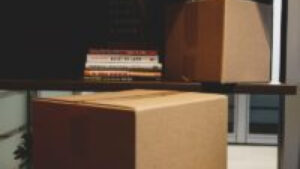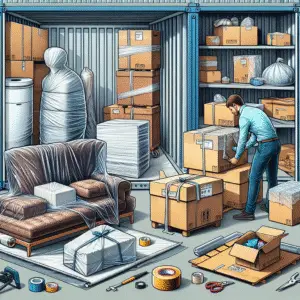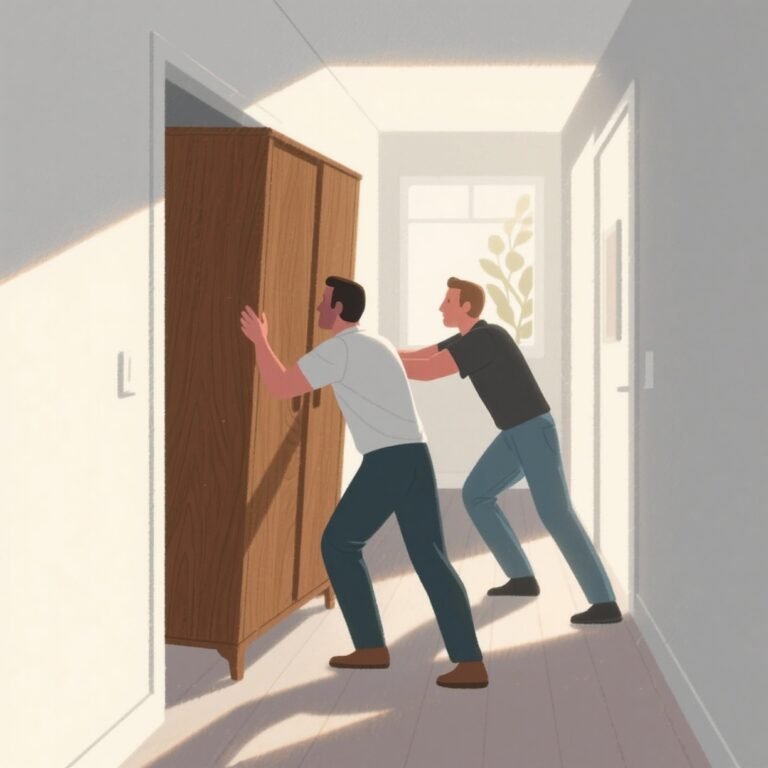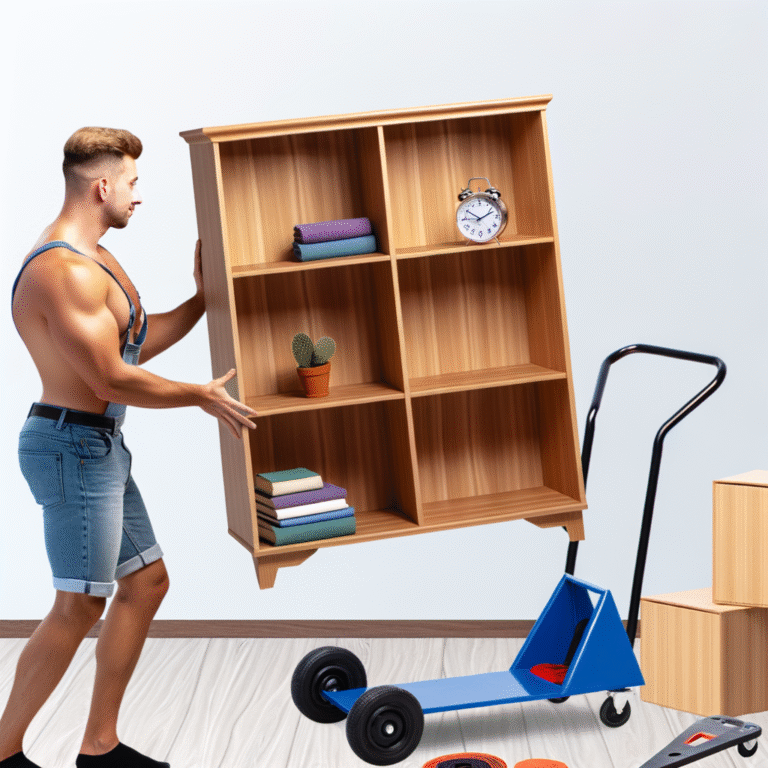Moving Antique Furniture: Tips to Prevent Damage and Devaluation
Moving Antique Furniture: Crucial Tips to Prevent Damage and Devaluation
Imagine this: your cherished 19th-century armoire, lovingly passed down through generations, arrives at your new home splintered and devalued. A single mistake during your move could cost not only thousands of dollars in damage but also a painful loss of history. Moving antique furniture isn’t like shifting an IKEA bookcase — it’s a delicate process that requires planning, precision, and patience.
Antique furniture carries with it more than just functional purpose. It holds stories, memories, and often significant monetary value. But the journey from one home to another can degrade that value faster than you think. Scratches, warping, or snapped joints diminish both aesthetics and authenticity. To prevent these devastating outcomes, this guide covers expert-backed steps from careful preparation to unpacking — ensuring your antiques arrive in flawless condition.
Understanding the Value and Fragility of Antique Furniture
Before packing a single piece, it’s crucial to understand what makes antique furniture unique. Generally, furniture that is at least 100 years old qualifies as antique. These items are often handcrafted using techniques and materials rarely found in contemporary pieces, such as solid hardwood joints, hand-carved details, and fragile finishes like shellac or lacquer.
Unlike modern furniture, antiques can’t simply be replaced. Some might have been finished with organic oils that react poorly to certain moving materials. Others could have old nails or joints that weaken with time. That makes them extremely vulnerable during transportation. Their emotional and financial value means that even minor damage can cause dramatic depreciation.
Preparing for the Move
Assess Each Piece
Start with a thorough assessment. Examine each antique for existing damage or weaknesses. Note hairline cracks, wobbly legs, or chipped finishes. Take detailed photographs from multiple angles. Not only does this help document the original condition for insurance purposes, but it also offers a reference for reassembly.
Gather Proper Supplies
Using the right materials is half the battle. Invest in thick furniture blankets, foam wrap, and soft bubble wrap to cushion every inch. Avoid thin or recycled materials, which can tear or compress under pressure. Use high-quality packing tape that won’t peel off mid-transport. For furniture with sharp corners or glass inlays, corner protectors and plastic wrap help shield against cracks and pressure. A dolly or furniture sliders will reduce shock during movement.
Disassembly (If Possible)
Some antique pieces, especially larger items like beds or wardrobes, can be safely disassembled. Remove drawers, detachable legs, and delicate accents like finials. Clearly label each part and store screws and hardware in labeled, sealed bags. Photograph each furniture piece before disassembly to make reassembly smoother.
Cleaning Before Packing
Don’t trap decades of dust beneath your wrapping. Cleaning antique furniture before transport is essential to prevent abrasion and mold. Use a dry microfiber cloth or an upholstery-safe vacuum for dust. For wood, steer clear of water or industrial cleaners. Instead, opt for a slightly damp cloth for spot cleaning, followed by a quick dry with a lint-free towel. Over-cleaning or using chemicals can strip finishes and diminish value.
Packing Techniques to Prevent Damage
Wrapping Antique Furniture Safely
Wrap each piece individually, starting with a soft barrier like foam wrap, followed by thicker blankets. Sensitive details like carvings or glass doors should be double-wrapped. Avoid letting packing tape touch the furniture surface directly — tape only over protective material.
Securing Loose Elements
Anything that can move should be addressed. Tape drawers shut using plastic wrap or secure them after removal. Glass doors or shelves? Remove them entirely or pad them thoroughly against movement. Legs, carvings, and handles should be stabilized or detached to avoid snapping off.
Labeling Fragile Items Clearly
Clearly mark anything fragile. Use bold labels like “Antique – Handle With Care” on all sides of wrapped pieces. This helps movers or helpers understand what requires extra caution, especially in high-pressure environments like moving day.
Loading and Transporting Antique Furniture
Loading Strategies
Heaviest and most solid pieces go on the bottom to create a stable base. Position items upright whenever possible and distribute weight evenly to prevent toppling or shifting.
Proper Placement in Moving Truck
Avoid stacking other furniture or boxes on top of antiques. Use blankets or foam sheets between each item to prevent friction. Place delicate items in secure corners or against thickly padded walls. Tie down larger furniture securely to minimize jostling during transit.
Climate Considerations
Temperature swings and humidity can warp wood and damage finishes. Antiques should ideally be moved in climate-controlled vehicles, especially if the move crosses state lines or occurs during extreme weather. According to the Smithsonian Institution’s Museum Conservation Institute, “Fluctuations in relative humidity are the most damaging environmental factor for wooden objects.” Protecting your antiques from these changes is vital to preserve their structural integrity.
Hiring Professionals vs. DIY Moving
When to Consider Professional Antique Movers
If you’re moving cross-country or transporting high-value pieces, hiring specialized antique movers is the safest route. These professionals are trained in handling fragile items and come equipped with the right tools and insurance policies.
What to Look for in a Moving Company
Choose companies with specific experience in antique transport. Look for credentials like BBB accreditation, read reviews, and ask for references. Ensure the company offers full coverage insurance that includes high-value collectibles.
Cost Comparison and Value of Protection
While professional antique movers cost more upfront, the protection they offer may save you from costly repairs or irreversible damage. Weighing the preservation of priceless furniture against moving-day savings often tilts the scale toward hiring pros.
Unpacking and Reassembling Antique Furniture
Once your antiques arrive, resist the urge to rush. Inspect each item before unwrapping. Compare it to the original photographs to catch any damage immediately. Use your reference photos for reassembling. Let wooden pieces acclimate to the new environment before full setup to prevent warping caused by sudden humidity shifts. Finish with a light dusting or touch-up — no deep cleaning yet.
Insurance and Documentation
Insure your antiques appropriately. Look into specialized policies that cover not just the cost of repair but also depreciation after damage. Always get updated appraisals before a move. Keep documents, photos, and appraisals together in a folder. If disaster strikes, having everything organized will make filing a claim easier and faster.
Long-Term Care After the Move
Placement in your new home affects longevity. Avoid placing antiques near heating vents, direct sunlight, or humid corners like bathrooms. Use dehumidifiers if needed. Regularly dust with soft cloths and avoid harsh cleaners. Consider annual maintenance with a conservator for rare or irreplaceable pieces.
Conclusion
Moving antique furniture is about more than just logistics — it’s about preservation. With the proper steps, from careful packing to mindful transport, you can ensure these treasured items survive the journey and continue enriching your life. Respect the craftsmanship, honor the history, and protect these timeless pieces for future generations to enjoy.













